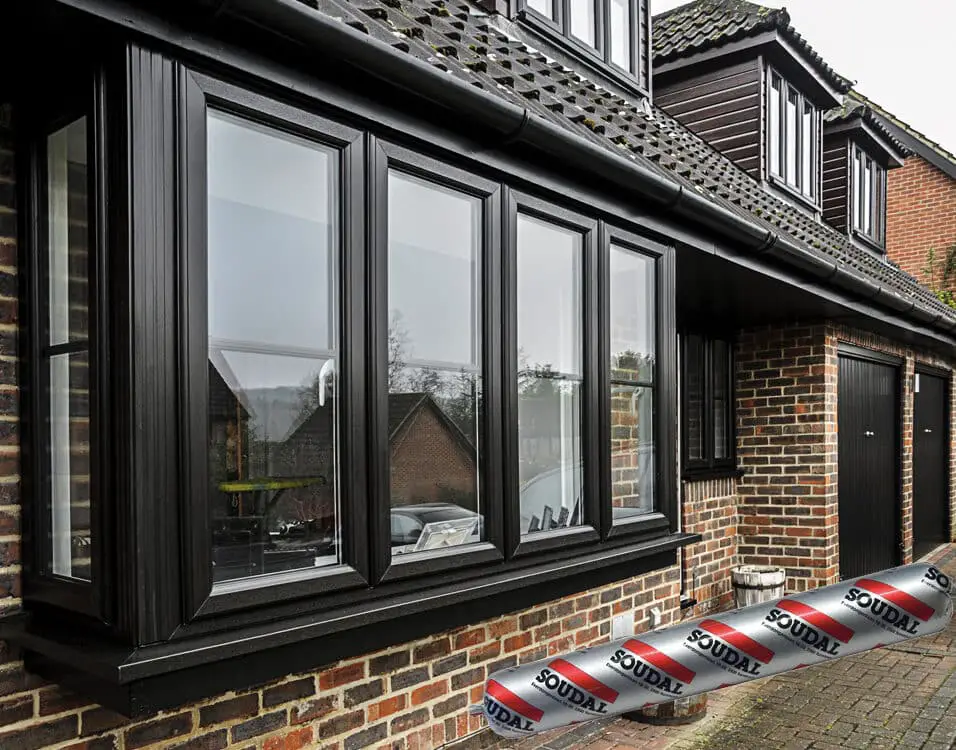How To Prevent Exterior Condensation On Windows
Introduction
How To Prevent Exterior Condensation On Windows: Exterior condensation on windows can be a frustrating and problematic issue for homeowners. It not only obstructs your view but can also lead to water damage and mold growth. However, fret not, for in this comprehensive guide, we will unveil effective strategies to prevent exterior condensation on your windows.
Condensation occurs when warm, moist indoor air comes into contact with cold window damage surfaces, causing water droplets to form. While interior condensation is common, exterior condensation can be equally troublesome, especially during temperature fluctuations. This guide will explore the root causes of this issue and provide you with practical, cost-effective solutions to tackle it head-on.
From understanding the science behind condensation to implementing weatherproofing measures, we’ll cover it all. You’ll discover tips for choosing the right window treatments, adjusting indoor humidity levels, and sealing potential gaps. By the end of this guide, you’ll have a comprehensive toolkit to safeguard your windows against exterior condensation, keeping your home comfortable and damage-free. Say goodbye to foggy, dripping windows – let’s dive into the world of exterior condensation prevention.

How do you stop condensation on the outside of a window?
Getting Rid of Window Condensation on the Outside
Because it’s seasonal and climate-related, condensation on the outside of windows is quite common. It isn’t indicative of problems with your windows or the humidity inside your home. You can simply wait for the sun to come out and dry up all the moisture.
Condensation on the outside of windows typically occurs when the temperature of the glass surface is colder than the dew point of the surrounding air. While you can’t control outdoor temperature and humidity, there are several steps you can take to minimize or prevent exterior window condensation:
- Improve Insulation: Proper insulation around windows helps maintain a consistent temperature on the glass surface, reducing the likelihood of condensation. Consider adding weatherstripping, caulking, or using double-glazed or Low-E windows to improve insulation.
- Increase Ventilation: Proper ventilation can help equalize indoor and outdoor temperatures and humidity levels. Ensure good airflow within your home by using exhaust fans in kitchens and bathrooms and opening windows periodically to exchange indoor and outdoor air.
- Manage Indoor Humidity: Lowering indoor humidity can decrease the potential for condensation. Use dehumidifiers, adjust your heating system to maintain a consistent temperature, and make sure your home is adequately ventilated.
- Use Thermal Curtains or Window Film: Thermal curtains or window films with insulating properties can help maintain a stable temperature at the glass surface, reducing condensation.
- Install Storm Windows: Storm windows create an additional barrier against outdoor temperatures and can be effective at reducing condensation on the interior and exterior of windows.
Remember that eliminating exterior window condensation entirely may not always be possible, especially during extreme weather conditions, but by implementing these strategies, you can significantly reduce the occurrence.
How do I stop moisture from forming on my windows?
Circulate more air near the windows
Turning up the heat a bit and even placing a fan near the window to consistently blow warmer air across the glass can help increase the temperature and get rid of any water droplets or ice that may be forming.
To stop moisture from forming on your windows, you’ll need to address the root causes of condensation, which typically occur due to a difference in temperature between the glass surface and the indoor air, coupled with high humidity levels. Here are several effective steps to prevent moisture from forming on your windows:
Improve Ventilation:
Proper ventilation is essential to maintaining consistent humidity levels in your home. Use exhaust fans in areas prone to moisture, like the kitchen and bathroom, to expel humid air outside.
Open windows periodically, even in cold weather, to allow fresh air to circulate and reduce indoor humidity.
Control Indoor Humidity:
Use a hygrometer to monitor indoor humidity levels. Ideally, keep humidity between 30% to 50%.
If indoor humidity is consistently high, consider using a dehumidifier to remove excess moisture from the air.
Insulate Windows:
Improve the insulation around your windows to prevent cold glass surfaces, which are more prone to condensation. Use weatherstripping or caulk to seal any gaps or cracks around the frames.
Consider upgrading to double-glazed or Low-E windows, which have better insulation properties.
Use Thermal Curtains or Window Film:
Thermal curtains or window films with insulating properties can create a barrier between the indoor air and the window surface, reducing the temperature difference that causes condensation.
Reduce Indoor Activities that Generate Moisture:
Be mindful of activities like cooking, boiling water, and using a humidifier, as these can introduce excess moisture into the air. Use exhaust fans or open windows when performing such tasks.
Install Storm Windows:
Storm windows provide an additional layer of insulation and can help prevent condensation on both the interior and exterior of windows.
Use Moisture-Absorbing Products:
Place moisture-absorbing products like silica gel packets or desiccant crystals on window sills or ledges to absorb excess moisture.
Check for Leaks:
Inspect windows for leaks or gaps in the sealing. Repair any issues with caulking or weatherstripping.
Properly Maintain Windows:
Keep windows clean, as dirt and dust can exacerbate condensation issues. Regularly wipe down window surfaces.
Consider Humidity Control Systems:
For severe and persistent condensation problems, you might want to invest in a whole-house humidity control system that works in conjunction with your HVAC system.
Remember that some condensation may still occur during extremely cold weather, but by following these steps, you can significantly reduce and manage moisture formation on your windows, maintaining a healthier and more comfortable indoor environment.
Does salt stop condensation on windows?
While there was still condensation in my bathroom after my shower, I noticed my windows were much less cloudy in my main living space – and I haven’t noticed any sign of mold anywhere in my apartment. ‘Salt has adsorption properties, which means that it can bind to moisture and prevent it from developing condensation.
Salt can be used as a short-term solution to reduce condensation on windows, but it doesn’t completely stop condensation, and its effectiveness is limited. Here’s how salt can be used:
- Salt Socks or Bags: Fill socks or small cloth bags with salt and place them on window sills or near the base of the window. Salt has hygroscopic properties, which means it can absorb moisture from the air. By placing salt near the window, it can help reduce indoor humidity levels in the immediate vicinity.
- Dehumidifier Crystals: Some products on the market contain salt-based dehumidifier crystals. These can be placed in containers near windows to absorb excess moisture from the air.
While these methods can temporarily reduce the amount of moisture in the air near the window, they do have limitations:
- Limited Coverage: Salt-based solutions only affect the immediate area around the window. They won’t address overall humidity levels in your home.
- Temporary Solution: The effectiveness of salt-based methods is temporary. Once the salt becomes saturated with moisture, it will no longer be effective, and you’ll need to replace it.
- Not a Comprehensive Solution: Condensation on windows is often a result of indoor humidity levels and temperature differences. Salt can help mitigate the effects but won’t address the underlying causes, such as poor insulation or high indoor humidity.
To effectively reduce and manage condensation on windows, it’s important to address the root causes by improving insulation, controlling indoor humidity, and ensuring proper ventilation. While salt can be a small part of your strategy, it should not be relied upon as the sole solution for condensation issues.
What spray reduces condensation on windows?
Rain-X Anti-Fog is designed to eliminate interior condensation caused by wet weather, high humidity levels or temperature changes. The new and improved formula provides increased anti-fogging protection, and even works well under high humidity conditions.
There are anti-condensation sprays available that can help reduce interior window condensation. These sprays create a hydrophobic barrier on the glass surface, preventing moisture from forming droplets. To use them effectively:
- Clean the Window: Ensure the window is clean and free of dust and debris. A clean surface allows the spray to adhere better.
- Apply the Spray: Follow the manufacturer’s instructions for the specific anti-condensation spray you’re using. Typically, you’ll spray a thin, even coat onto the glass and then wipe it off with a clean cloth.
- Reapply as Needed: The effectiveness of these sprays can vary, and they may need to be reapplied periodically, especially in areas with high humidity.
Anti-condensation sprays can be a useful short-term solution, but they may not eliminate condensation entirely if there are underlying humidity or insulation issues. It’s important to combine their use with other strategies like proper ventilation, humidity control, and insulation improvements for long-term prevention.
Should I wipe condensation from windows?
Property expert Gregory Smith at PriceYourJob says, ‘It’s sensible to wipe condensation off, particularly where it’s likely to drip down onto wooden window frames and sills to prevent damage. ‘ To do this, he suggests, ‘Use an absorbent microfibre cloth or paper towel to soak it up and reduce smears. ‘
Wiping condensation from windows is a common practice and can be beneficial, especially if done correctly. However, it’s important to understand when and how to do it effectively:
When to Wipe Condensation:
Wiping condensation from windows is a common practice and can be beneficial, especially if done correctly. However, it’s important to understand when and how to do it effectively:
When to Wipe Condensation:
- Regular Maintenance: It’s a good idea to wipe down windows regularly to prevent the accumulation of moisture, which can lead to mold and mildew growth or damage to wooden frames.
- During and After Activities: Wipe condensation during or after activities that generate excess moisture, such as cooking, bathing, or using a humidifier. This can help prevent moisture from saturating the window area.
- Cold Weather: In cold weather, wiping condensation can help prevent the growth of mold or mildew on the window frames and sills. It can also reduce the risk of wooden frames rotting due to prolonged exposure to moisture.
How to Wipe Condensation:
- Use a Dry Cloth or Towel: Use a clean, dry cloth or paper towel to wipe the condensation. Microfiber cloths work well because they are absorbent and won’t leave streaks.
- Avoid Pushing Moisture Elsewhere: Be careful not to push the moisture into the surrounding areas, as this can create other problems. Instead, start from the top and work your way down.
- Ventilate: After wiping, make sure to ventilate the room to remove excess moisture and prevent further condensation.
In summary, wiping condensation from windows is a good practice, especially in situations where excess moisture is present. It can help maintain a healthier indoor environment and prevent damage. However, addressing the root causes of condensation, such as humidity control and insulation, is equally important for a long-term solution.
Does vinegar stop condensation on windows?
Alternatively, you could try a mix of vinegar and water in a spray bottle to keep your windows dry. This isn’t a bad idea, if you’re looking for a cheap way to improve your indoor air quality. There are a few more specific things you can do to prevent condensation, such as using an insulating glazing.
Vinegar can be used as a temporary solution to reduce condensation on windows, but it doesn’t stop condensation completely. Here’s how you can use vinegar:
- Mixing Solution: Create a mixture of equal parts white vinegar and water in a spray bottle.
- Spray and Wipe: Spray the vinegar solution onto the interior of the window and then wipe it off with a clean, dry cloth or paper towel.
Vinegar works by temporarily reducing surface tension, which can prevent water droplets from forming. However, this effect is not long-lasting, and condensation is likely to return once the vinegar evaporates. Additionally, the smell of vinegar may be a concern for some people.
While vinegar can offer a quick fix, addressing the underlying causes of condensation, such as humidity control and insulation, is a more effective and long-term solution.
What absorbs moisture from windows?
Salt is one of the most absorbent natural products available, helping to combat moisture around the home. Using salt is the most basic method when trying to make a homemade dehumidifier.
Several products and methods can help absorb moisture from windows and reduce condensation:
- Silica Gel Packets: Silica gel packets, often found in packaged goods, are excellent moisture absorbers. Place them on window sills or ledges to help reduce humidity levels.
- Desiccant Crystals: Desiccant crystals, like calcium chloride-based products, can be placed in containers near windows to absorb moisture from the air. They are available in various forms, including buckets and bags.
- Dehumidifiers: Portable or whole-house dehumidifiers can effectively reduce overall indoor humidity levels, which can, in turn, help reduce condensation on windows.
- Ventilation: Adequate ventilation through exhaust fans, opening windows periodically, and using air exchangers can help remove moisture from the air and reduce condensation.
- Anti-Condensation Products: There are anti-condensation products designed to absorb and capture moisture, such as condensation collector mats, that can be placed beneath windows to prevent water from accumulating on sills.
Using moisture-absorbing products in conjunction with other strategies, like managing indoor humidity levels and improving insulation, can be an effective way to reduce condensation on windows.
How do you stop condensation on windows cheap?
How do you reduce condensation naturally?
Condensation in the home can be stopped by reducing humidity and increasing ventilation. Less humidity in the air means less water vapour to turn into condensation. And increased ventilation provides a way for water in the air to escape.
Stopping condensation on windows inexpensively involves taking practical, budget-friendly steps to reduce moisture and improve insulation. Here are some cost-effective solutions:
- Ventilation: Properly ventilating your home by using exhaust fans, opening windows briefly, or installing an air exchange system can help maintain consistent indoor humidity levels and reduce condensation.
- Weatherstripping and Caulking: Seal any gaps or cracks around windows with inexpensive weatherstripping or caulk. This prevents warm, moist air from reaching the cold glass surface.
- Use Thermal Curtains or Window Film: Thermal curtains or window film with insulating properties can be affordable and effective at improving insulation around windows.
- DIY Dehumidifiers: Create DIY moisture absorbers using salt, silica gel, or rice in small containers placed near windows.
- Adjust Indoor Humidity: Use natural methods like simmering pots of water on the stove to add humidity in dry conditions or using a fan or dehumidifier to reduce humidity when needed.
- Regular Cleaning: Keep windows clean to prevent mold or mildew growth, which can worsen condensation issues.
While these strategies can help reduce condensation on windows without breaking the bank, it’s essential to strike a balance between cost-effective solutions and long-term effectiveness. In some cases, investing in energy-efficient windows or a dehumidifier may be a worthwhile expense if condensation problems persist.

Conclusion
The battle against exterior condensation on windows is a winnable one. By arming yourself with the knowledge and implementing the practical tips outlined in this guide, you can effectively prevent condensation from clouding your windows and causing potential damage to your home.
Remember that understanding the science behind window condensation, maintaining ideal indoor humidity levels, and employing appropriate weatherproofing measures are key to success. Whether you’re dealing with a minor annoyance or trying to protect your home from moisture-related issues, the strategies presented here will help you maintain clear and condensation-free windows.
So, don’t let exterior condensation dampen your view or your spirits. Take action today, and enjoy the benefits of a comfortable, dry, and well-maintained living space. With these preventative measures in place, you’ll not only preserve the beauty of your windows but also the integrity of your home for years to come.Start implementing these solutions and say hello to crystal-clear windows and a happier, healthier living environment.







